- Introduction
Jammu and Kashmir’s economy, nestled in the high-cost mountainous region, grapples with various developmental challenges, from natural disasters to external events and geographical inequalities. Factors such as remoteness, isolation, limited capacity, income volatility, and susceptibility to environmental changes contribute significantly to the state’s economic vulnerability. The region heavily depends on governmental subsidies and external supplies, with the majority of the population relying on agriculture. Historical economic instability, compounded by colonial and oppressive rules, has impeded the state’s journey toward self-sufficiency.
This study delves into the economic division and disparity in the state of Jammu and Kashmir during two oppressive periods: first, under British rule, and later, during the Dogra regime led by Hindu rulers. The primary focus is on how the Hindu minority, particularly in terms of land ownership, wielded control over the predominantly Muslim population, resulting in significant economic imbalances. The research also explores the land reform system, distribution management, and their transformative impact on the state’s economy, marking the transition from a feudal to an agrarian system.
Importance and Scope:
Jammu and Kashmir’s historical economic backwardness and disparities have attracted attention from experts. The state’s unique composition, comprising three distinct geographical regions, has contributed to regional imbalances and challenges. This study aims to investigate the economic composition and disparity during oppressive rule, analyze land distribution management, and assess the role of the land reform movement in transforming the agricultural sector.
Objectives:
Investigate the economic composition and disparity during oppressive rule.
Examine the management of land reforms and land holdings.
Analyze the role of the land reform movement in revolutionizing the state’s agricultural sector.
Explore the National Conference’s role in reforming the state’s Jagirdari system and introducing the ‘Naya Kashmir’ manifesto.
- Kashmir: Unraveling the India-Pakistan Conflict
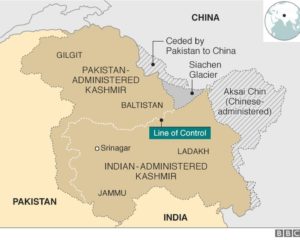
The struggle for control over Kashmir has been a longstanding source of conflict between nuclear-armed neighbors India and Pakistan. This essay aims to delve into the roots of this dispute, exploring its historical origins and the complexities that continue to fuel tensions between the two nations.
How Old is this Fight?
Kashmir, an ethnically diverse Himalayan region known for its breathtaking landscapes, became a flashpoint even before India and Pakistan gained independence in 1947. The princely state’s choice to accede to India, amidst an invasion threat from tribesmen supported by Pakistan, laid the foundation for a protracted conflict.
Historical Timeline
The United Nations’ intervention, the signing of a ceasefire agreement in 1949, and subsequent wars in 1965 and 1999 further complicated the situation. The region is now divided, with both India and Pakistan claiming Kashmir in full but controlling only specific territories.
Unrest in Indian-Administered Kashmir
The Indian-administered part of Kashmir has witnessed an armed revolt against Indian rule for three decades, claiming numerous lives. Recent changes, including the revocation of Article 370 in 2019, have heightened tensions, sparking concerns about autonomy and the demographic makeup of the region.
Article 370 Repeal
The revocation of Article 370, a constitutional provision granting significant autonomy to Kashmir, triggered unrest. The move, championed by India’s Bharatiya Janata Party (BJP), resulted in increased security measures, internet shutdowns, and international condemnation.
Ongoing Unrest
High unemployment, human rights abuses, and incidents like the 2016 protests following the death of militant leader Burhan Wani have fueled anti-India sentiment. The region has experienced cycles of violence, with over 500 deaths in 2018 alone.
Peace Prospects
Hopes for peace in the new century, marked by a 2003 ceasefire and promises to curb funding for insurgents, were marred by subsequent events. Recent conflicts, including the Pulwama attack in 2019, have further strained India-Pakistan relations.
Recent Developments
India’s reorganization of Indian-administered Kashmir into two territories has prompted international responses. China objected, and Pakistan vowed to challenge India’s actions globally.
What Lies Ahead?
As tensions persist and international scrutiny grows, the future of Kashmir remains uncertain. The need for dialogue and a comprehensive resolution that considers the aspirations and welfare of the region’s people is paramount.
- Transformative Impact of Article 370 Abrogation on Jammu and Kashmir
It took 70 years for the Indian government to abolish Article 370, a temporary provision in the Indian Constitution that granted special status to the former state of Jammu and Kashmir. Following its revocation, Jammu and Kashmir underwent a significant transformation, with peace, prosperity, and development replacing separatism, sedition, and Pakistan-sponsored terrorism in the Himalayan region.
Article 370 was incorporated into the Constitution on October 17, 1949. It exempted Jammu and Kashmir from most of the Indian Constitution, except for Article 1 and Article 370 itself, allowing the state to draft its own Constitution. The provision limited Parliament’s legislative powers concerning Jammu and Kashmir. Consultation with the state government was required for extending a central law on subjects covered in the Instrument of Accession (IoA), and the “concurrence” of the state government was mandatory for extending it to other matters.
A significant shift in political will was necessary to undertake this bold move. Since 1949, no one dared to repeal Article 370, as those in power in Jammu and Kashmir had propagated the notion that its removal would lead to the region becoming part of Pakistan. When Prime Minister Narendra Modi assumed office in 2014, his government initiated plans to abolish Jammu and Kashmir’s so-called special status and fully integrate the erstwhile princely state into the Union of India.
The plan was put into action after the Bharatiya Janata Party (BJP) secured over 300 Lok Sabha seats in the 2019 parliamentary elections, and Modi returned to power with a decisive majority. Revoking Article 370 became a top priority, and Indian Home Minister Amit Shah, along with his team, devised a strategy to conclusively settle the debate over Jammu and Kashmir’s accession. Prime Minister Narendra Modi gave his approval to end the controversy shortly after starting his second consecutive term.
On August 5, 2019, the Indian Home Minister introduced a bill in the Rajya Sabha to revoke Article 370 and reorganize Jammu and Kashmir into two Union Territories—J&K and Ladakh. The bill was first passed in the Rajya Sabha and then in the Lok Sabha.
Mainstream Kashmiri leaders had predicted that abolishing Jammu and Kashmir’s special status would lead to widespread civil unrest, claiming that no one would be left in the Himalayan region to hoist the tricolor. However, their predictions proved unfounded, as Jammu and Kashmir did not witness any protests. Instead, people embraced the change in the status quo and actively participated in the nation-building process. The removal of Article 370 debunked the notion that it acted as a bridge between New Delhi and Jammu and Kashmir, with those who warned of serious repercussions if it were abolished now exposed.
- New Jammu & Kashmir

Sheikh Abdullah’s vision of “Naya Kashmir” aimed to transform Jammu and Kashmir into a welfare state. The concept gained popularity, influencing policies that addressed socio-economic issues. Land reforms, including abolishing Jagirdari systems, were pivotal components of this vision.
Following the revocation of Jammu and Kashmir’s special status, separatists supported by Pakistan, who had exploited the tragic circumstances of Kashmiris for the past 30 years to fuel the neighboring country’s proxy war in Jammu and Kashmir, found themselves rendered irrelevant. With nothing left to exploit, Article 370, in effect until August 5, 2019, had provided these elements with a pretext to perpetuate the conflict. They consistently conveyed to the public that Kashmir’s alignment with Pakistan and achieving Azadi were plausible, thereby sustaining the accession debate and perpetuating unrest in the region.
Kashmiri mainstream politicians leveraged Article 370 as a means to secure the benefits of power and enjoy privileges offered to them as members of ruling or opposition parties. Their political agendas were exclusively centered around Jammu and Kashmir’s special status. Beyond matters of governance, they delved into India-Pakistan relations, the separatists’ agenda, and the activities of militants. Numerous ministers in previous political administrations held the belief that peace in Kashmir was contingent upon the Government of India engaging in talks with Pakistan, Hurriyat, and militant commanders. However, the decisive decision taken by the Centre on August 5, 2019, paved the way for the resurgence of peace and prosperity in the Himalayan region, without succumbing to dialogues with those who propagated hatred and violence for the past three decades.
In addition to laying the groundwork for new projects, a significant number of stalled development initiatives have been either completed or are on the verge of completion. Separatists, who previously served as proxies for Pakistan in Kashmir and played a role in fomenting street violence, have been relegated to obscurity and are currently confined in jails.
Mainstream politicians, who once asserted that meaningful change in Jammu and Kashmir was contingent upon discussions with Pakistan and militant leadership, are now attempting to regain relevance in the altered political landscape.
Since 2018, Jammu and Kashmir has undergone a significant transformation, with the Central government directly managing all affairs. In August 2019, the special status of Jammu and Kashmir was revoked, leading to the bifurcation of the erstwhile state into two Union Territories.
Over the past two and a half years, Jammu and Kashmir has experienced rapid development, attracting investment proposals worth thousands of crores from external investors. Infrastructure projects, including roads and bridges, have been successfully completed. Health infrastructure has been overhauled, and there has been a concerted effort to enhance connectivity between Jammu and Kashmir and the rest of the country. Plans are in place to connect Kashmir with New Delhi through the railway network by 2024. The aim is to harness maximum hydel resources in Jammu and Kashmir to achieve self-reliance in power production. The government has also focused on generating employment opportunities for youth and empowering women.
Agrarian Reforms after 1948:
The National Conference government, post-1948, prioritized agrarian reforms. Committees like the Wazir Committee recommended ownership limits and land distribution, culminating in the Jammu and Kashmir Agrarian Reforms Act of 1975. The Act aimed to vest ownership rights with cultivators, impose land ceilings, and address socio-economic imbalances.
The government’s initiatives are yielding tangible results on the ground. The Gross State Domestic Product (GSDP) in Jammu and Kashmir has seen a Compound Annual Growth Rate (CAGR) of 8.51% (in Rs.) between 2015-16 and 2020-21, reaching Rs. 1.76 trillion (US$ 24.28 billion). Jammu and Kashmir’s Net State Domestic Product (NSDP) increased at a CAGR of 8.61% (in Rs.) from 2015-16 to 2020-21, reaching Rs. 1.49 trillion (US$ 20.49 billion).
To boost the horticulture sector, food processing, and agro-based industries are flourishing in the Union Territory. Jammu and Kashmir’s favorable climate for floriculture, coupled with a diverse range of flora and fauna, has resulted in Asia’s largest tulip garden. The government has placed emphasis on small-scale and cottage industries, such as carpet weaving, silks, shawls, basketry, pottery, copper and silverware, papier-mâché, and walnut wood. The cottage handicrafts industry provides direct and gainful employment to approximately 340,000 artisans.
The residents of Jammu and Kashmir have benefited from various centrally sponsored schemes, including Ayushman Bharat. The Prime Minister’s Special Scholarship Scheme (PMSSS) for Jammu and Kashmir students has enabled numerous youth to pursue their studies in different colleges across the country.
Economy of Jammu & Kashmir during Colonial Period:
The state’s economy suffered under Dogra rulers who prioritized personal gain over economic development. Land, predominantly owned by Hindus, became a focal point during land reform movements led by Sheikh Abdullah. This redistribution resulted in Hindu landlords relocating to Jammu, impacting land dynamics.
The government has not only ensured national integrity but has also aligned the region with the vision of Aatma Nirbhar Bharat. Esteemed institutions like IIT, IIM, IIMC, and AIIMS have already been established in Jammu and Kashmir, offering its youth an opportunity to develop skills that can compete on a global scale. Under the Prime Minister’s Gram Sadak Yojana (PMGSY), a total length of 11,517 km, comprising 1858 roads and 84 bridges, has been constructed, with many more in progress. Additionally, new medical colleges, two cultural universities, and 22 colleges are being established in the Union Territory.
The Jammu and Kashmir Industrial Policy (JKIP)-2021-30 mark a significant departure from previous industrial policies. With a spending outlay of Rs 28,400 crore, the largest incentive to date, the policy is set to drive industrial development in Jammu and Kashmir for the next 15 years. It is expected to generate an investment of Rs 20,000 crore (Rs 200 billion) and provide employment for 4.5 lakh individuals over the plan period.
The myth that Kashmir is a disturbed area has been shattered by a record number of tourists visiting without fear of stone pelters and separatists. Despite the challenges of the Covid pandemic, 6.65 lakh tourists visited Kashmir in 2021, marking the highest footfall in the last seven years. In the first four months of 2022, nearly 7 lakh tourists have already visited, with March recording the highest number of 1.8 lakh arrivals. Kashmir has become a favored tourist destination, with all hotels, houseboats, lodges, and guest houses fully booked. The improved security scenario, resulting from the sacrifices of security personnel, has instilled confidence in the industry and investors, dispelling the fear of violence.
The common Kashmiri has emerged as the biggest beneficiary, free from hate mongers and propagandists. After 30 years of Pakistan-sponsored onslaught, the people of Jammu and Kashmir are actively participating in development, peace, and prosperity. The region has witnessed a transformation into a business hub, attracting big business houses that were unimaginable three years ago. The concerted efforts of the Central and UT governments have proven that “nothing is impossible.” Terrorism has significantly reduced, and the security scenario has led to the return of normalcy, making Jammu and Kashmir a secure investment destination.
Investment policies have been revised, creating substantial employment opportunities and positioning Jammu and Kashmir as a powerhouse of prosperity. Leading conglomerates such as the Lulu Group, Apollo, EMAAR, and Jindal have invested in the Union Territory, while multiple Memorandums of Understanding (MoUs) have been signed with entities like Al Maya Group, MATU Investments LLC, GL Employment Brokerage LLC, Century Financial, and Noon E-commerce. The UT has received proposals worth Rs 52,155 crore within a year, with more expected, benefiting the people of Jammu and Kashmir. The new industrial policy, with an outlay of Rs 28,400 crore, is a turning point in the region’s history, heralding a “golden period” for industrial development. The irreversible change underscores Jammu and Kashmir’s emergence as a powerhouse of prosperity.
Literature Review:
Various scholarly works, including Rai’s “Hindu Rulers, Muslim Subjects,” and Behera’s “Demystifying Kashmir,” provide insights into the historical, socio-economic division in Kashmir during colonial periods. Ganaie’s study on socio-religious reform movements sheds light on the societal changes influencing political participation.
Findings:
Abolition of the Jagirdari system and redistribution of land to landless individuals.
Despite the Hindu minority, significant landownership by Hindus.
The National Conference government, under Sheikh Abdullah, successfully implemented land reforms, correcting historical wrongs.
- Discover the Unique Kashmiri Culture and Traditions
The cultural fabric of Kashmir intricately weaves together a fusion of customs originating from Northern India, Northern Pakistan, and the Chinese territory of Aksai Chin. Renowned for its cultural heritage, Kashmir stands as a testament to the harmonious coexistence of diverse religions, including Hinduism, Sikhism, Islam, and Buddhism. The amalgamation of these varied religious influences contributes to the captivating beauty that defines Kashmir. The people, representing different faiths, play an integral role in enhancing the cultural richness of the region. Their adoption and preservation of distinct cultural practices have not only added vibrancy to Kashmir but have also spurred significant transformations in their way of life.
Kashmir’s cultural diversity serves as a source of unity rather than division. It reflects a unique blend of traditions that have evolved over time, creating a harmonious living experience. This dynamic integration of customs has led to a cultural tapestry that is both timeless and adaptive to contemporary living.
Artistic expressions in Kashmir, manifested through intricate handicrafts, vibrant clothing, and soulful music, are a testament to the creativity and depth of the local culture. The arts serve as a mirror reflecting the identity and traditions of the Kashmiri people.
The cultural calendar of Kashmir is marked by a tapestry of celebrations, each resonating with religious and cultural significance. Whether it be the joyous Hindu festivals, the exuberant Sikh celebrations, the solemn Muslim observances, or the serene Buddhist rituals, each festival contributes to the kaleidoscope of Kashmiri culture.
In essence, Kashmir beckons explorers to delve into the captivating richness of its culture—a realm where diversity converges into a harmonious symphony. Witness the traditions passed down through generations, the artistic expressions that transcend time, and the warm embrace of a culture that stands as a testament to the unity in diversity defining the enchanting land of Kashmir.
5.1 Origin, Background & People

The Kashmiri population represents a distinctive ethno-linguistic group, sharing similarities with the Indo-Greek racial structure. Primarily concentrated in the Valley of Kashmir, Doda, Kishtwar, and Ramban tehsils of Jammu Division, Kashmiris also form communities in Pakistan, Upper Punjab, and Potohar, where they coalesce into organized groups.
While the Kashmiri people are dispersed in various parts of India, their primary presence is in the Valley of Kashmir. Language serves as a significant cultural marker for them, bearing a strong influence from Sanskrit. This linguistic influence is prevalent among both Kashmiri Muslims and Kashmiri Hindus, albeit with regional variations as one traverses different parts of Kashmir. The writing script employed by Kashmiris reflects an Arabic style.
Sources said that the distinctive Wazwan culinary tradition and broader Kashmiri culture bear traces of influence from Central Asian and Persian cultural elements. Various facets of their cultural identity, including dance, music, cuisine, carpet weaving, and Koshur Sufiana, contribute to the rich tapestry of Kashmiri heritage.
Kashmiri culture finds its stronghold in the Kashmir Valley and Doda of the Chenab region. The valley, renowned for its fine arts, boasts traditional boats and houseboats, exquisite handicrafts, and a poetic tradition that adds depth to the cultural narrative. The convergence of diverse elements within Kashmiri culture reflects a unique blend shaped by historical, linguistic, and cultural interactions, making it an integral and distinctive part of the broader cultural mosaic in the Indian subcontinent.
5.2 Cuisines

Kashmir boasts a delectable array of both vegetarian and non-vegetarian dishes that are sure to tantalize your taste buds. For meat enthusiasts, signature dishes like Kashmiri Kebab, Rogan Josh, Yakhni, Pasanda, Syun Alu, and Methi Keema offer a diverse and flavorful selection. Vegetarian options are equally enticing, featuring dishes such as Hak, Rajmah, Zarda, Tursh, Shree Pulao, Nadeir Yakhaen, and Ladyar Tsaman. Prepared with a combination of fresh vegetables and paneer, these dishes add a delightful twist to Kashmiri cuisine.
For those with a sweet tooth, the dessert selection is a must-try, with delights like sevaiyaan, phirni, and barfi that are bound to make you fall in love with Kashmiri sweets. A warm welcome awaits guests in Kashmir with hot sheer tea and Kahwah, providing a unique and unforgettable taste experience. The globally acclaimed Kashmiri Pulao, a household favorite, is prepared with care and skill in almost every home at regular intervals.
During the winter months, many Kashmiris turn to comforting dishes like hak or karam sag, not only for their delicious flavors but also for the warmth they provide in the chilly weather. Whether you are a meat connoisseur, a vegetarian enthusiast, or have a sweet tooth, Kashmiri cuisine offers a diverse and rich culinary experience that reflects the region’s cultural and culinary heritage.
5.3 Costumes
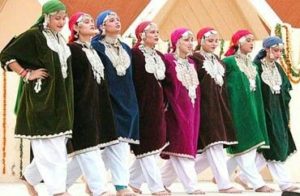
The traditional attire of Kashmiri people is characterized by vibrant colors and captivating aesthetics. The majority of individuals embrace traditional clothing, with women adorning themselves in exquisite jewelry such as nose rings, bangles, earrings, necklaces, and loose salwar kameez, providing both elegance and comfort during the warmer seasons. Meanwhile, men commonly dress in kurta pajama, shalwars, gurabi, and skullcaps. During the winter months, a distinctive overcoat known as Pheran is worn by Kashmiris, adorned with colorful patches and intricate embroidery.
The attire worn by Kashmiri people typically includes loose gowns, crafted from various fabrics to accommodate different weather conditions. Many men complement their outfits with headgear, and women often don skullcaps. Additionally, it is customary for women to cover their heads and shoulders in the presence of strangers and elders as a sign of respect. The traditional Kashmiri attire serves as a reflection of the region’s rich culture and lifestyle, highlighting the enduring cultural values observed in India.
5.4 Festivals and Observances

Kashmiri people enthusiastically celebrate a myriad of festivals, adding joy and vibrancy to the region’s rich cultural tapestry. Jammu and Kashmir, in addition to its breathtaking landscapes, serves as the backdrop for a diverse array of cultural celebrations that showcase the heritage of its people. Among the notable festivals are Baishakhi, Lohri, Eid-ul-Fitr, Hemis Festival, Tulip Festival, Shikara Festival, Gurez Festival, Sindu Darshan, and Domoche. These celebrations attract a large number of people who come together during these auspicious occasions, infusing the festive days with enthusiasm and communal spirit.
Traditional dances, painting exhibitions, a variety of cuisines, and stalls featuring handicrafts are integral components of these festivals. Several fairs, including Bahu Mela, Jhiri Mela, and Craft Mela, are organized on special days, providing platforms to highlight the richness of Kashmiri culture. These events contribute to making Kashmir one of the best places to experience a blend of natural beauty and cultural heritage.
5.5 Handicrafts
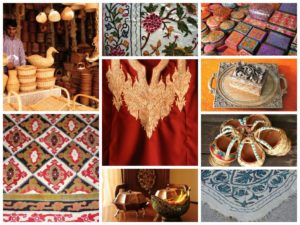
Kashmir stands out as a renowned destination for its exquisite and distinctive handicrafts. The globally celebrated Pashmina Shawl, known for its unparalleled quality and fabric, is a cherished possession for women worldwide. The shawl, with its breathtaking design and intricate embroidery work, not only symbolizes royalty but also provides unmatched warmth and softness.
Additionally, Kashmir is acclaimed for its hand-knotted carpets and woolen rugs adorned with intricate floral designs. Basketry, paper mache, wooden carvings, furniture crafted from walnut wood, and silverware represent some of the finest handicrafts created by the skilled artisans of Kashmir. Given Kashmir’s status as a premier tourist attraction, the handicraft industry has witnessed substantial growth, supported by government initiatives.
5.6 Dance and Music
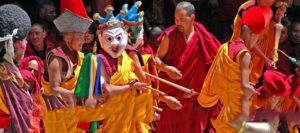
Kashmir boasts its own distinctive style of dance and music, characterized by simplicity and splendor. Dance and music are integral components of almost every festival and fair, serving as significant attractions for tourists. The repertoire of dance and music in Kashmir is vast, with performances tailored to suit various occasions.
One notable dance form is the Mask dance, a captivating spectacle performed during the Hemis Festival. Dancers adorned in colorful costumes, face masks, and brocade robes execute ceremonial dances. Other prominent dance forms include Chakri, Ladishah, Ruf dance, and Dandaras dance. Roul, Dogri, and Wuegi-Nachun are examples of folk dances cherished by the Kashmiri people.
Folk music holds a special place in the hearts of Kashmiris, with the resonant strains of the Rabab captivating listeners. Instruments like Sitar, Dukra, and Nagara accompany this enchanting musical tradition. Wanawun, Ghazals, Sufi, and Choral are among the major musical forms in Kashmir, lending melody to wedding ceremonies and festivals.
5.7 Occupation
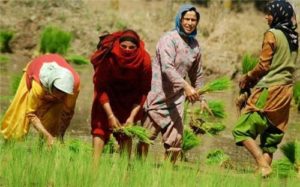
Agriculture dominates the occupational landscape in Kashmir, with a focus on cultivating various crops such as rice, maize, mustard, cottonseed, radish, onions, gourd, lotus-stalk, linseed, carrots, and more. The favorable climatic conditions in Kashmir contribute to the successful cultivation of fruits like mulberry, grapes, plums, apples, cherries, apricots, walnuts, almonds, and others.
The state’s economy significantly benefits from agricultural exports and the export of handicrafts, shawls, and rugs, contributing to a substantial inflow of foreign exchange.
- Conclusion:
Introduction to Article 370: A 70-year Legacy
- Inclusion in the Constitution on October 17, 1949.
- Provision of special status to Jammu and Kashmir.
- Exemption from most of the Indian Constitution, except Article 1 and Article 370 itself.
Political Will and Implementation
-
-
- Lack of attempts for 70 years due to apprehensions.
- Initiatives taken after Prime Minister Narendra Modi assumed power in 2014.
- Implementation after BJP’s significant victory in 2019 elections.
- Home Minister Amit Shah tasked with the plan’s execution.
- Article 370 revoked on August 05, 2019, leading to the reorganization of Jammu and Kashmir.
-
Immediate Impact: New Dawn in Jammu and Kashmir
-
- Contrary predictions by mainstream Kashmiri leaders.
- Lack of protests; people embraced the change.
- Dispelling the myth that Article 370 acted as a bridge between New Delhi and J&K.
- Exposing those who claimed serious repercussions if Article 370 was revoked.
Naya Jammu & Kashmir: Post-Abrogation Scenario
-
- Irrelevance of Separatists:
- Separatists’ relevance diminished after the abrogation.
- Article 370 provided a narrative for conflict by supporting the idea of Kashmir’s merger with Pakistan.
- Accusations of selling dead bodies to fuel the proxy war.
- Political Exploitation by Mainstream Politicians:
- Mainstream politicians used Article 370 for political gains.
- Focus on J&K’s special status rather than governance.
- Change in political scenario after August 05, 2019.
- Foundation laid for new projects and completion of stalled development projects.
- Separatists incarcerated; mainstream politicians seeking relevance.
- Irrelevance of Separatists:
Rapid Development in Jammu and Kashmir
-
- Economic Growth:
- Increased investment proposals from outside.
- Infrastructure development: roads, bridges, and revamped health infrastructure.
- Connectivity improvements between J&K and the rest of the country.
- Goal to connect Kashmir with New Delhi through the Railway network by 2024.
- Employment Opportunities and Empowerment:
- Creation of employment opportunities for youth.
- Focus on women’s empowerment.
- Positive impact on Gross State Domestic Product (GSDP) and Net State Domestic Product (NSDP).
- Sectoral Focus:
- Thriving horticulture, food processing, and agro-based industries.
- Small-scale and cottage industries promoted.
- Centrally sponsored schemes like Ayushman Bharat extended to J&K.
- Economic Growth:
Educational and Infrastructural Transformations
-
- Arrival of institutions like IIT, IIM, IIMC, and AIIMS in J&K.
- Establishment of new medical colleges, cultural universities, and colleges.
- Progress under Prime Minister’s Gram Sadak Yojana (PMGSY) with roads and bridges construction.
Industrial Policy as a Turning Point
-
- Introduction of Jammu and Kashmir Industrial Policy (JKIP)-2021-30.
- Significant spending outlay and incentives for industrial development.
- Positive response from conglomerates across the country.
- Arrival of big business houses, signifying a “golden period” for industrial development.
Tourism Resurgence and Security Improvements
-
- Record-breaking tourist footfall despite prior perceptions of a disturbed area.
- Improved security scenario leading to increased confidence among industry and investors.
- Support of the people of J-K against terrorism contributing to the overall positive environment.
New Investment Policies and Employment Potential
-
- Introduction of new investment policies attracting investors.
- Creation of employment potential for future generations.
- Receipt of proposals worth Rs 52,155 crore for investment within one year.
Conclusion: A Powerhouse of Prosperity
-
- The ground situation in J&K has irreversibly changed.
- Emergence of Jammu and Kashmir as a powerhouse of prosperity post Article 370 abrogation.
Kashmir, nestled in the heart of the Himalayas, weaves a cultural tapestry harmoniously blending customs from Northern India, Northern Pakistan, and the Chinese territory of Aksai Chin. This fusion, celebrated for its cultural heritage, stands as a testament to the coexistence of diverse religions, creating a timeless and adaptive cultural experience.
The people of Kashmir, representing various faiths, play a pivotal role in enriching the region’s cultural mosaic. Their adoption and preservation of distinct cultural practices add vibrancy and usher in transformative changes in their way of life. This diversity serves as a unifying force, reflecting a unique blend of traditions that have evolved over time.
Artistic expressions in Kashmir, from intricate handicrafts to vibrant clothing and soulful music, mirror the depth and creativity of local culture. The cultural calendar is marked by celebrations resonating with religious and cultural significance, contributing to the kaleidoscope of Kashmiri culture.
Kashmir’s population, with its distinctive ethno-linguistic identity, is primarily concentrated in the Valley of Kashmir, reflecting regional variations in language influenced by Sanskrit.
Culinary delights in Kashmir, showcasing a diverse and rich culinary heritage, invite exploration. From meat-centric dishes like Kashmiri Kebab to vegetarian delights like Hak and Rajmah, the cuisine reflects the region’s cultural richness. Desserts such as sevaiyaan, phirni, and barfi, coupled with the warmth of sheer tea and Kahwah, offer a unique taste experience.
Traditional attire, characterized by vibrant colors and distinctive overcoats, reflects the region’s rich culture. Festivals add joy and vibrancy, featuring traditional dances, painting exhibitions, and culinary delights.
Kashmir’s handicrafts, including the globally acclaimed Pashmina Shawl, hand-knotted carpets, and intricate woodwork, showcase local craftsmanship. Dance and music, featuring styles like Mask dance and folk forms, captivate both locals and tourists during festivals.
Occupationally, agriculture takes center stage, contributing significantly to the state’s economy. The export of handicrafts adds to foreign exchange earnings, making Kashmir a unique blend of cultural heritage, natural beauty, and economic significance.
In essence, Kashmir invites exploration into the captivating richness of its culture—a realm where diversity converges into a harmonious symphony, defining the enchanting land of Kashmir with traditions, arts, and warm hospitality.
In the closing of the tale of Kashmir’s timeless beauty, the iconic quote, “If there is a heaven on earth, it is here, it is here, it is here,” resonates like a lyrical echo through the corridors of history. These immortal words, attributed to the Mughal Emperor Jahangir, find their roots in the enchantment that overcame him upon beholding the unparalleled beauty of the Kashmir Valley.
Jahangir’s profound admiration for Kashmir’s natural splendor finds a poignant expression in his memoir, the “Tuzk-e-Jahangiri” or the “Jahangirnama.” Through his writings, he intricately woven his deep affection for the region, capturing the essence of its pristine lakes, lush gardens, and the majestic grandeur of the Himalayas.
As the centuries have unfolded, this quote has evolved into a symbol of Kashmir’s ethereal charm, an enduring testament to the captivating allure that has left an indelible mark on all fortunate enough to witness its beauty. Jahangir’s spontaneous proclamation has transcended time, etched into the tapestry of history, a perpetual celebration of Kashmir’s unique and heavenly splendor.
Bilal Ahmad Farooq
[Bilal Ahmad Farooq is an accomplished master’s student at the University of Kashmir, specializing in Geopolitics and International Relations, hailing from the picturesque region of Indian Kashmir. With an unwavering commitment to academic excellence, Bilal has emerged as a dynamic individual actively engaged in the study of global affairs.
Currently pursuing a degree that delves into the intricate world of Geopolitics and International Relations, Bilal has chosen the University of Kashmir as the backdrop for his academic pursuits. His academic journey is marked by an insatiable curiosity about international affairs and a profound interest in understanding the complexities of global geopolitics.
Having earned his bachelor’s degree in Political Science with a focus on International Relations at Jamia Millia Islamia in India, Bilal has honed his analytical skills and gained a solid foundation in the discipline. His passion for global affairs has led him to explore diverse perspectives on political dynamics, diplomacy, and international cooperation.
In addition to his academic endeavors, Bilal Ahmad Farooq is an active participant in volunteering and social activities within the university. His commitment to social responsibility underscores his belief in contributing to the betterment of society beyond the confines of the classroom.
Prior to his current academic pursuit, Bilal successfully completed his bachelor’s degree in Political Science at Ankara University in Turkey, further broadening his understanding of global issues and fostering a multicultural outlook.
Driven by a desire to comprehend and contribute to the evolving landscape of global relations, Bilal Ahmad Farooq is not only a diligent scholar but also a thoughtful contributor to the discourse on international affairs. With an ongoing commitment to research and understanding, Bilal is poised to make meaningful contributions to the field of Geopolitics and International Relations.]
References
- Naya Jammu & Kashmir Journey till Now Book – Author – Mir Junaid
- https://holidayshunt.com/jahangir-called-kashmir-heaven-on-earth/#:~:text=The%20famous%20quote%2C%20%E2%80%9CGar%20firdaus,to%20the%20Mughal%20Emperor%20Jahangir.
- https://www.easemytrip.com/blog/unique-kashmiri-culture-and-traditions
- https://www.bbc.com/news/10537286
- https://medium.com/@socioconcerngroupkashmir/embracing-change-naya-jammu-and-kashmir-yearns-for-development-and-peace-cd84d150d624



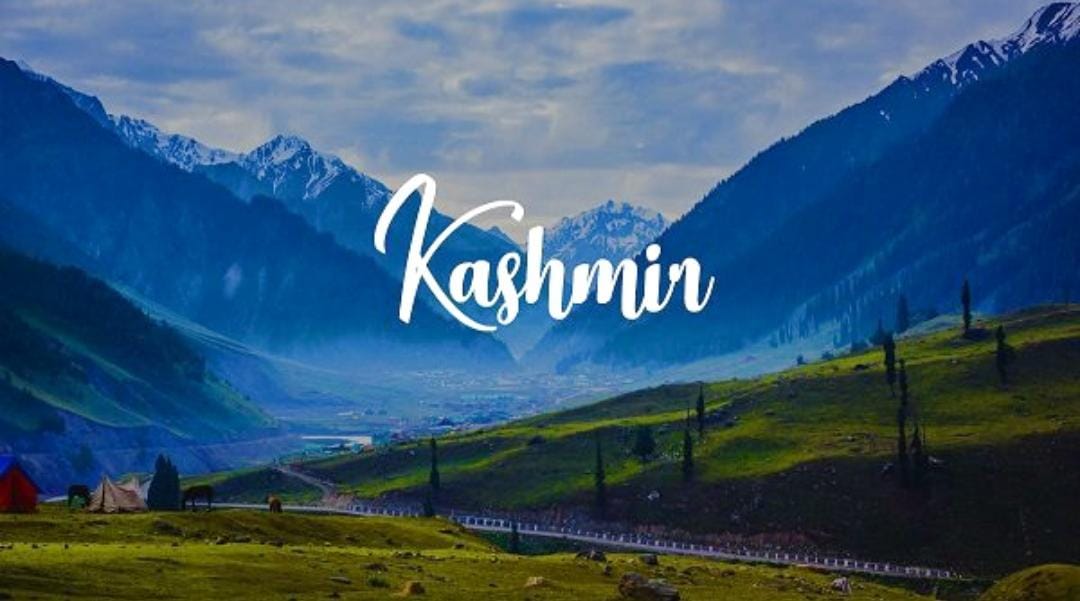
I like the efforts you have put in this, regards for all the great content.